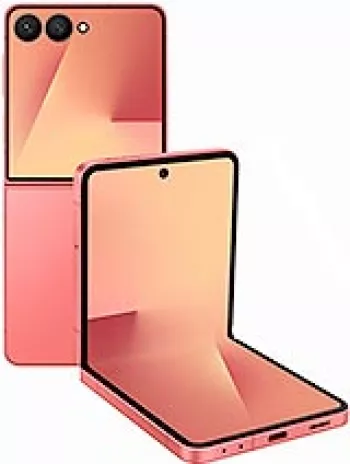
Design and Build
The Samsung Galaxy Ace II X S7560M sports a design that was typical for its time, with a modest and practical approach. The device measures 121.5 x 63.1 x 10.5 mm and weighs 122 grams, making it lightweight and comfortable to use with one hand. The phone features a plastic body with a removable back cover, which allows users to access the 1500mAh battery. The Ace II X uses the Mini-SIM format, a standard during its release period. The device came in two primary colors: Black and White, catering to different user preferences.
Display
The Galaxy Ace II X is equipped with a 4.0-inch TFT display. The screen size was considered adequate at its release, offering a pixel density of approximately 233 pixels per inch with a resolution of 480 x 800 pixels. This results in a display ratio of 5:3, typical for smartphones of that era. The screen's clarity and brightness are sufficient for basic smartphone tasks such as browsing, texting, and viewing multimedia content, although it's not as vibrant or high-contrast as AMOLED displays.
Performance
Under the hood, the Samsung Galaxy Ace II X is powered by a 1.0 GHz CPU and is paired with 768MB of RAM. This hardware configuration is capable of handling basic smartphone operations and multitasking to some extent, although it may struggle with more demanding applications or games. The device runs on Android 4.0 (Ice Cream Sandwich), an operating system that provides a user-friendly experience but lacks the modern features found in later versions of Android.
Storage
The device offers 4GB of internal storage, which is quite limited by today's standards, but at the time, this capacity was manageable for users who were not reliant on apps. To accommodate more data and applications, the Galaxy Ace II X includes a microSDHC slot, allowing users to expand the storage capacity according to their needs, which is a feature appreciated by those who wish to carry more media files or apps.
Camera
The Samsung Galaxy Ace II X is equipped with a 5MP rear camera featuring autofocus and an LED flash, enabling users to capture basic photos with reasonable quality. While it cannot compete with modern high-resolution cameras, it serves well for day-to-day photography tasks. The camera can record video at 720p resolution at 30fps. On the front, there is a simple VGA camera, which is adequate for video calls and basic selfies, though it doesn't offer high quality.
Battery Life
Powering the Ace II X is a 1500mAh Li-Ion removable battery. The battery life is quoted at up to 330 hours on standby and up to 8 hours and 20 minutes of talk time. This battery life was considered standard for smartphones of its class, allowing a full day of moderate use. The advantage of a removable battery is significant, as it permits users to replace it easily should it wear out or if an extended battery life is needed during travel.
Connectivity
In terms of connectivity, the Galaxy Ace II X supports GSM/HSPA network technologies, offering 2G bands (GSM 850/900/1800/1900) and 3G bands (HSDPA 900/2100). The device provides HSPA speeds of 7.2/5.76 Mbps, enough for basic web browsing and social media. Wi-Fi connectivity includes support for 802.11 b/g/n standards, with Wi-Fi Direct and a hotspot feature. Bluetooth 3.0 with A2DP allows for wireless audio streaming, and GPS support is available for location services. It’s important to note that the device does not feature NFC capabilities, which were just beginning to gain popularity at the time.
Additional Features
The phone includes a variety of sensors such as an accelerometer, proximity sensor, and a compass, enhancing its usability for navigation and various apps that make use of these sensors. A standard 3.5mm headphone jack and a stereo FM radio with RDS are also included, providing users with media listening options. The device uses a microUSB 2.0 port for charging and data transfer, common for its release period.
Conclusion
In summary, the Samsung Galaxy Ace II X S7560M represents an entry-level Android smartphone from an earlier era, aimed at users seeking basic functionality rather than high-end features. Its design and capabilities reflect the technological standards of its time, providing essential smartphone experiences such as calling, texting, basic web engagement, and access to apps via Android 4.0. While it may not dazzle by modern standards, it was a viable choice for budget-conscious consumers and those new to smartphones in the early 2010s.
Key Features of Samsung Galaxy Ace II X S7560M
- Supports GSM and HSPA Network Technologies
- Compact and lightweight design (122g)
- 4.0-inch TFT Display with a resolution of 480 x 800 pixels
- Powered by Android 4.0 (Ice Cream Sandwich)
- 1.0 GHz CPU offering smooth performance
- Expandable storage via microSDHC card slot
- 5 MP main camera with autofocus and LED flash
- 720p video recording capabilities
- Wi-Fi with Wi-Fi Direct and hotspot support
- Equipped with Bluetooth 3.0 and GPS
- Includes a removable Li-Ion 1500 mAh battery
- Available in Black and White color options
Disadvantages of Samsung Galaxy Ace II X S7560M
- Outdated Operating System: Android 4.0 (Ice Cream Sandwich), which may not support modern apps and security updates.
- Limited Internal Storage: Only 4GB internal storage, which can be quickly filled, although it has a microSDHC slot for expansion.
- Low RAM: 768MB RAM, which can affect the phone's performance and multitasking capabilities.
- No NFC Support: Lacks NFC support for contactless payments or data exchange.
- VGA Selfie Camera: Low-quality VGA front camera, which may not provide good quality selfies.
- Low Battery Capacity: 1500 mAh battery, which may require frequent charging for active users.
- 3G Connectivity: Limited to HSPA 7.2/5.76 Mbps speeds; no 4G LTE support for faster internet.
- Discontinued Model: The phone is discontinued, which may affect availability of parts and support.


View Also
More Phones
All Rights Reserved +14266 Phones © Mobilawy 2025

























